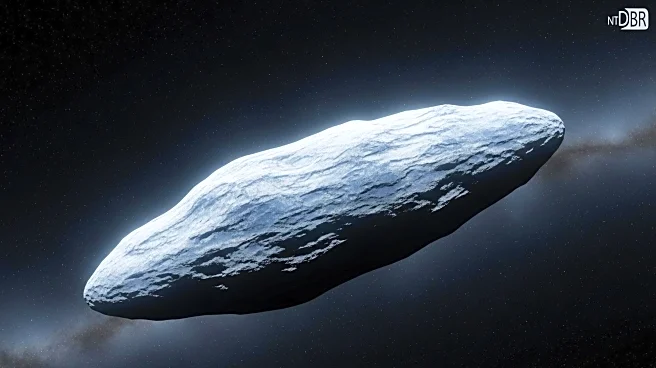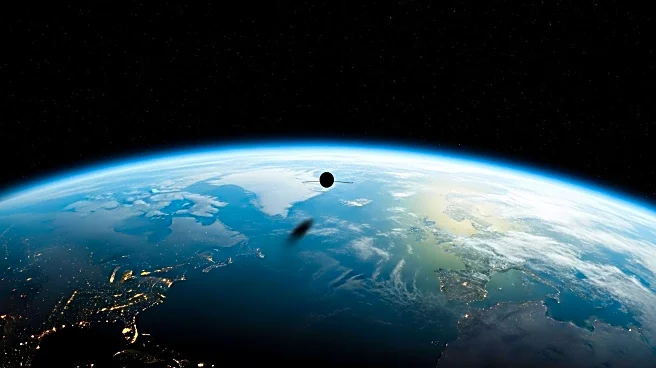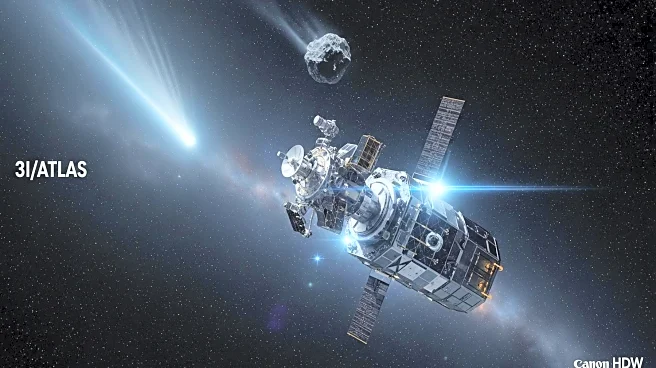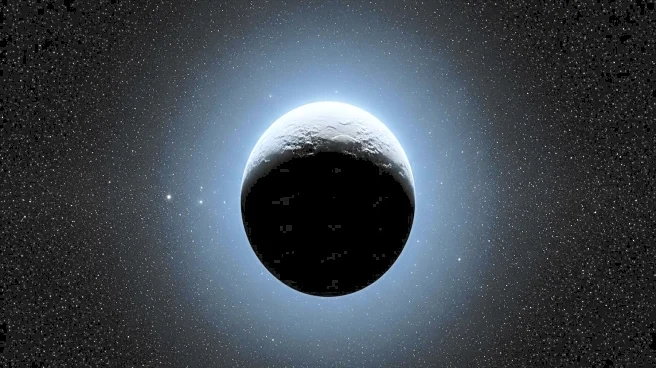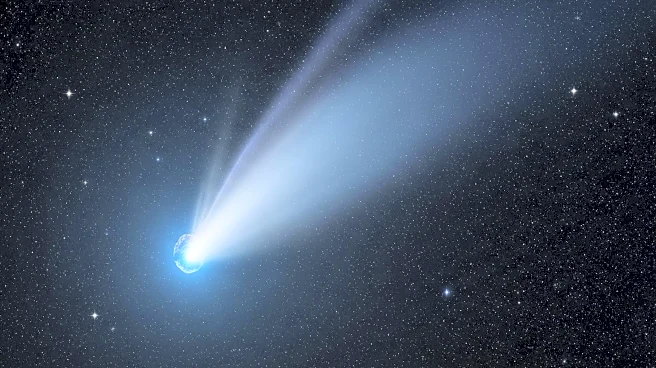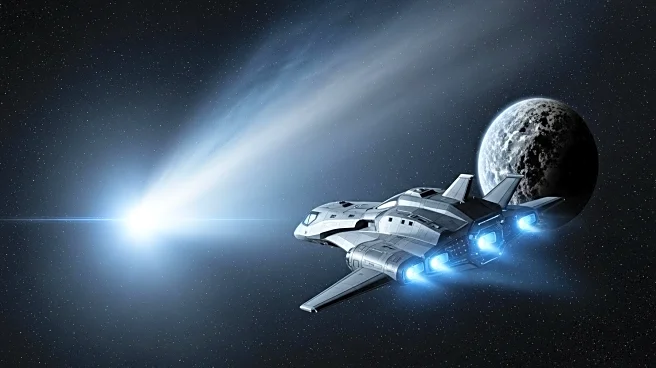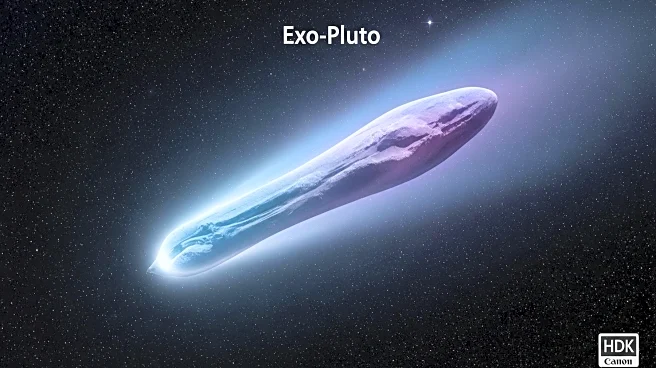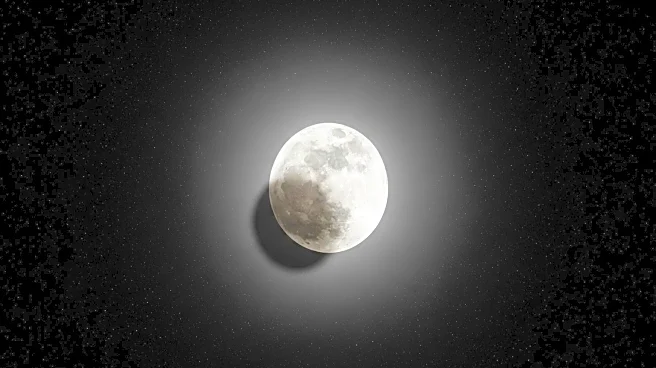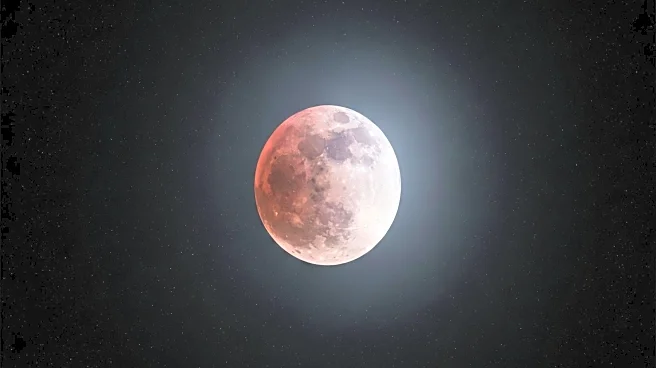What's Happening?
Scientists have determined that 1I/'Oumuamua, the first interstellar object to visit our solar system, is likely a fragment of an icy exoplanet, specifically an 'exo-Pluto.' This discovery was made based on its composition, which is similar to the nitrogen ice found on Pluto. The object was first observed in 2017, 40 days after its closest approach to the Sun, by Canadian astronomer Robert Weryk using the Pan-STARRS telescope in Hawaii. Steve Desch, an exoplanet researcher at Arizona State University, noted that the characteristics of 'Oumuamua align with those of a nitrogen ice slab, akin to Pluto's surface.
Why It's Important?
The identification of 'Oumuamua as a piece of an 'exo-Pluto' provides significant insights into the composition and characteristics of interstellar objects. This discovery enhances our understanding of the materials that make up distant cosmic bodies and their potential origins. It also underscores the importance of continued observation and study of such objects, which can offer clues about the formation and evolution of planetary systems beyond our own. The findings may influence future research directions in astronomy and planetary science, potentially leading to new theories about the distribution of nitrogen ice in the universe.
